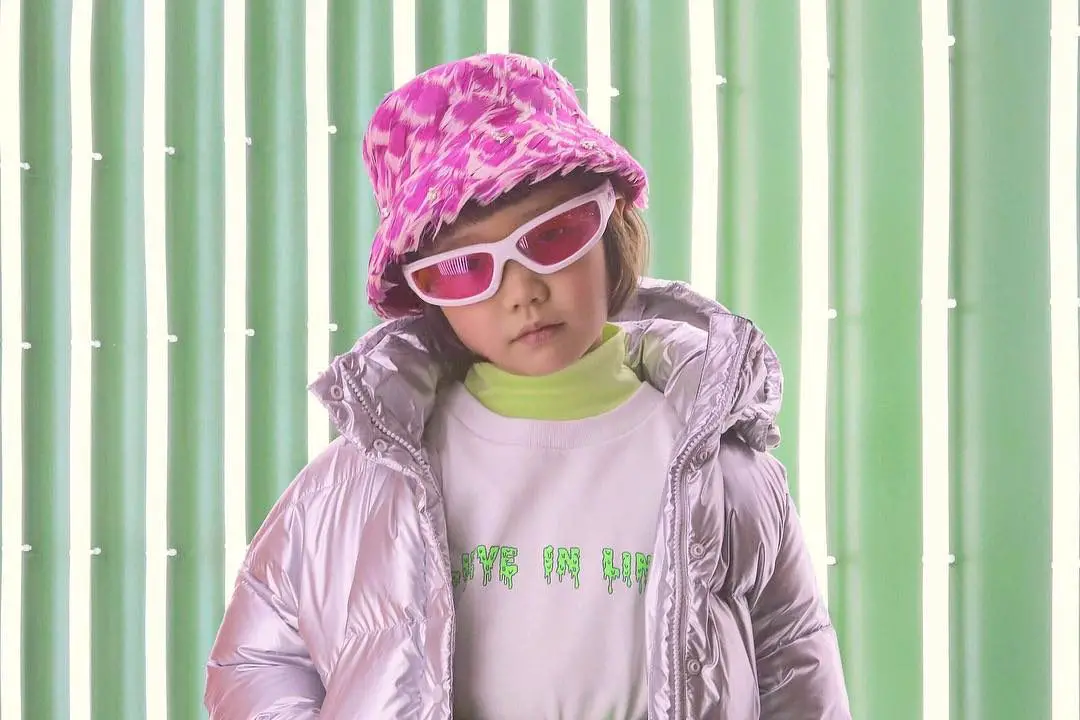College students never thought they would begin a sentence with “back in my day,” but many now relate to this sentiment. They watch as young teenagers today wear crop tops and short skirts at the age they used to wear T-shirts and bootcut jeans. This phenomenon is called Kids Getting Older Younger, commonly abbreviated to KGOY. KGOY first gained traction in the early 2000s but takes a new meaning today due to social media. Creators and celebrities on Instagram, YouTube and TikTok, aptly called influencers, inspire kids today to act and dress older (and cooler) than their predecessors did at their age.
Social media perpetuates KGOY through modeling, a psychological concept that can be described simply as learning by imitating. A person sees someone they respect perform a behavior, then they copy it. The most famous psychological experiment proving this concept is Albert Bandura’s 1961 “Bobo Doll” experiment. In the experiment, adults behaved aggressively with a Bobo doll in front of children, which, in turn, influenced the young test subjects to behave aggressively with the toy too. The dynamics and elements of modeling are especially prevalent in interactions between influencers, who are like the adults in Bandura’s experiment, and fans, who are like the children, on social media.
The first component for modeling is the imitator paying attention to their model, such as kids giving attention to those they follow online. Modeling also requires the retention of the modeler’s behavior. Retention can be achieved through repetition; social media algorithms provide repetition by showing a user content they have previously expressed interest in. Once a model is given attention and is retained, it is reproduced and imitated. Imitation is driven by contextual motivation; in this case, the motivation is wanting to be viewed as cool. Therefore, young people imitate what they consider most impressive and interesting, regardless of whether it is catered to their age group.
A key example of modeling through social media is seen within the online community of K-pop fans. These singers have loyal fanbases that pay attention to their work and idolize them. Their fans are then motivated to reproduce their outfits, dances and songs to express their admiration and impress others in the community.
Instagram and Fashion
On Instagram, fashion influencers are everywhere. Whether they emerged from YouTube, reality shows or movies, these creators share their personal style and outfits with their followers. Many Instagram users, including young people, follow fashion influencers based on how stylish they perceive them to be. They then end up with a curated group of accounts that they consider the pinnacle of how to dress. Fashion psychology dictates that the way people dress portrays how they want to be viewed, which provides motivation to Instagram users for modeling their behavior — and clothing choices — off of their favorite fashionable Instagram accounts.
In relation to Instagram and KGOY, young people want to be viewed positively by their peers. Based on their Instagram feeds, the best way to do so is to dress like the people they follow. This results in young people dressing trendier than previous generations; after all, every day they interact with an app that shows them clothing that they think is cool. The constant and repetitive viewing of fashion influencers’ posts leaves no shortage of stylish trends for teenagers to partake in; many fashion trends’ origins can be traced back to Instagram influencers. Certain clothing items become popular and spread out across fashion-focused Instagram accounts, then dissipate to their younger followers.
YouTube and TV
Today, YouTube is often listed among the most popular media platforms. It provides web shows, highlights YouTubers’ content and functions as a hub for music to gain popularity. Among YouTube’s content is mainstream media’s haunting attempts to reach the famous website’s audience: advertisements. According to YouTube, the uploader of an ad determines whether it is age-restricted. This policy is subjective, so ads for television shows aren’t as closely restricted as commercials have been in the past. These ads for TV shows, which are designed to convince the viewer to watch the show, are likely bringing young viewers to shows meant for older audiences.
Younger audiences are also brought to mature shows by popular commentary YouTubers, another “cause” of KGOY. Persuasion is highly reliant on trust, such as the trust viewers have that these creators will recommend something that they will enjoy watching. Therefore, if a commentary YouTuber creates a video about a show, their younger viewers will want to watch that show. A clear example of this modeling behavior is connected to reality dating shows. Many commentary YouTubers have made videos about risqué dating shows like “Too Hot To Handle” and “Temptation Island,” bringing young viewers to these series which, under traditional standards, wouldn’t be appropriate for younger audiences.
TikTok and Music
In recent years, TikTok has become the most popular social media platform, as millions of people access the app every day. Some of the most popular videos on the app are the viral dances choreographed by dancers like Jalaiah Harmon, Brian Esperon and Aust & Mar. The most popular TikTok dances can be recreated thousands of times, leading to users of the app likely hearing the same songs multiple times in one sitting. This, in addition to the contagiousness of the choreography, leads to the songs becoming regular listening for app users. TikTok dancers and their performances are seen as impressive and cool, so young people want to copy them — due to modeling — and listen and dance to the same music in order to stay trendy.
The trendy songs, however, are often songs that would be considered inappropriate for previous generations when they were young. The biggest example of this is the popular “WAP” dance. The 2020 song by Megan Thee Stallion and Cardi B is a feminist, sex-positive anthem that many conservative people have criticized. The critics follow more traditional standards, standards that many people in previous generations subscribed to; these standards dictate avoiding cursing and sexual language. Young people today, however, are enjoying and dancing to songs that, by these standards, would have been unacceptable for older generations during their childhoods.
Conclusion
TikTok, YouTube and Instagram all provide content that is considered trendy and stylish. Young people today model their behavior off of popular influencers and creators in order to feel and be perceived positively by their peers. This is how kids are getting older younger. Because content is more available to them, they have more, and likely older, models to base their stylistic choices on. While there is no harm in kids wearing more stylish clothing, watching more mature television and listening to more explicit music than older generations did when they were young, it’s important for kids to be able to be kids in some respects. This is the danger of KGOY — the more it happens, the less of a childhood kids will have.

















